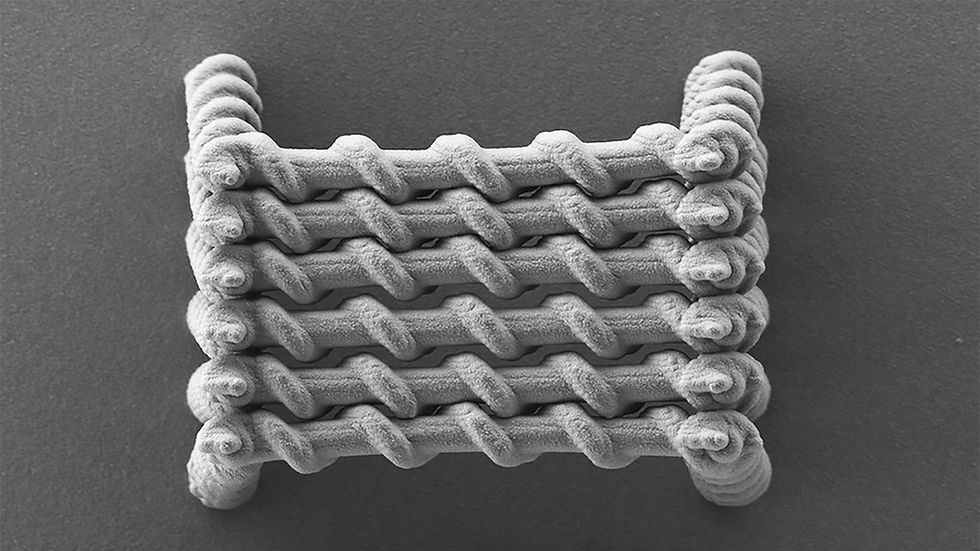Long-distance quantum information exchange -- success at the nanoscale
- Marine Le Bouar

- Mar 19, 2019
- 3 min read

At the Niels Bohr Institute, University of Copenhagen, researchers have realized the swap of electron spins between distant quantum dots. The discovery brings us a step closer to future applications of quantum information, as the tiny dots have to leave enough room on the microchip for delicate control electrodes. The distance between the dots has now become big enough for integration with traditional microelectronics and perhaps, a future quantum computer. The result is achieved via a multinational collaboration with Purdue University and the University of Sydney, Australia, now published in Nature Communications.
Size matters in quantum information exchange even on the nanometer scale
Quantum information can be stored and exchanged using electron spin states. The electrons' charge can be manipulated by gate-voltage pulses, which also controls their spin. It was believed that this method can only be practical if quantum dots touch each other; if squeezed too close together the spins will react too violently, if placed too far apart the spins will interact far too slowly. This creates a dilemma, because if a quantum computer is ever going to see the light of day, we need both, fast spin exchange and enough room around quantum dots to accommodate the pulsed gate electrodes.
Normally, the left and right dots in the linear array of quantum dots (Illustration 1) are too far apart to exchange quantum information with each other.
Frederico Martins, postdoc at UNSW, Sydney, Australia, explains: "We encode quantum information in the electrons' spin states, which have the desirable property that they don't interact much with the noisy environment, making them useful as robust and long-lived quantum memories. But when you want to actively process quantum information, the lack of interaction is counterproductive - because now you want the spins to interact!" What to do? You can't have both long lived information and information exchange - or so it seems. "We discovered that by placing a large, elongated quantum dot between the left dots and right dots, it can mediate a coherent swap of spin states, within a billionth of a second, without ever moving electrons out of their dots. In other words, we now have both fast interaction and the necessary space for the pulsed gate electrodes ", says Ferdinand Kuemmeth, associate professor at the Niels Bohr Institute.
Collaborations are an absolute necessity, both internally and externally
The collaboration between researchers with diverse expertise was key to success. Internal collaborations constantly advance the reliability of nanofabrication processes and the sophistication of low-temperature techniques. In fact, at the Center for Quantum Devices, major contenders for the implementation of solid-state quantum computers are currently intensely studied, namely semiconducting spin qubits, superconducting gatemon qubits, and topological Majorana qubits.
All of them are voltage-controlled qubits, allowing researchers to share tricks and solve technical challenges together. But Kuemmeth is quick to add that "all of this would be futile if we didn't have access to extremely clean semiconducting crystals in the first place". Michael Manfra, Professor of Materials Engineering, agrees: "Purdue has put a lot of work into understanding the mechanisms that lead to quiet and stable quantum dots. It is fantastic to see this work yield benefits for Copenhagen's novel qubits".
The theoretical framework of the discovery is provided by the University of Sydney, Australia. Stephen Bartlett, a professor of quantum physics at the University of Sydney, said: "What I find exciting about this result as a theorist, is that it frees us from the constraining geometry of a qubit only relying on its nearest neighbours". His team performed detailed calculations, providing the quantum mechanical explanation for the counterintuitive discovery.
Overall, the demonstration of fast spin exchange constitutes not only a remarkable scientific and technical achievement, but may have profound implications for the architecture of solid-state quantum computers. The reason is the distance: "If spins between non-neighboring qubits can be controllably exchanged, this will allow the realization of networks in which the increased qubit-qubit connectivity translates into a significantly increased computational quantum volume", predicts Kuemmeth.
Fast spin exchange across a multielectron mediator Filip K. Malinowski, Frederico Martins, Thomas B. Smith, Stephen D. Bartlett, Andrew C. Doherty, Peter D. Nissen, Saeed Fallahi, Geoffrey C. Gardner, Michael J. Manfra, Charles M. Marcus & Ferdinand Kuemmeth Nature Communicationsvolume 10, Article number: 1196 (2019)



























Comments